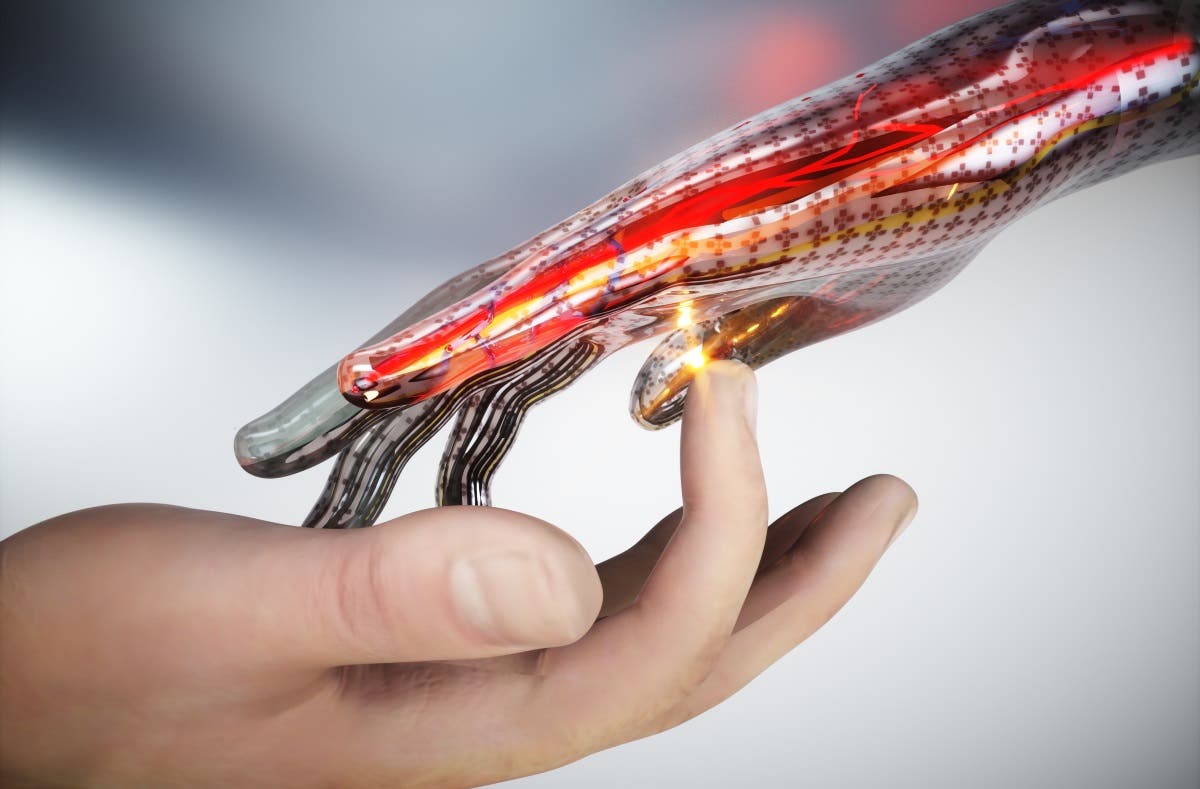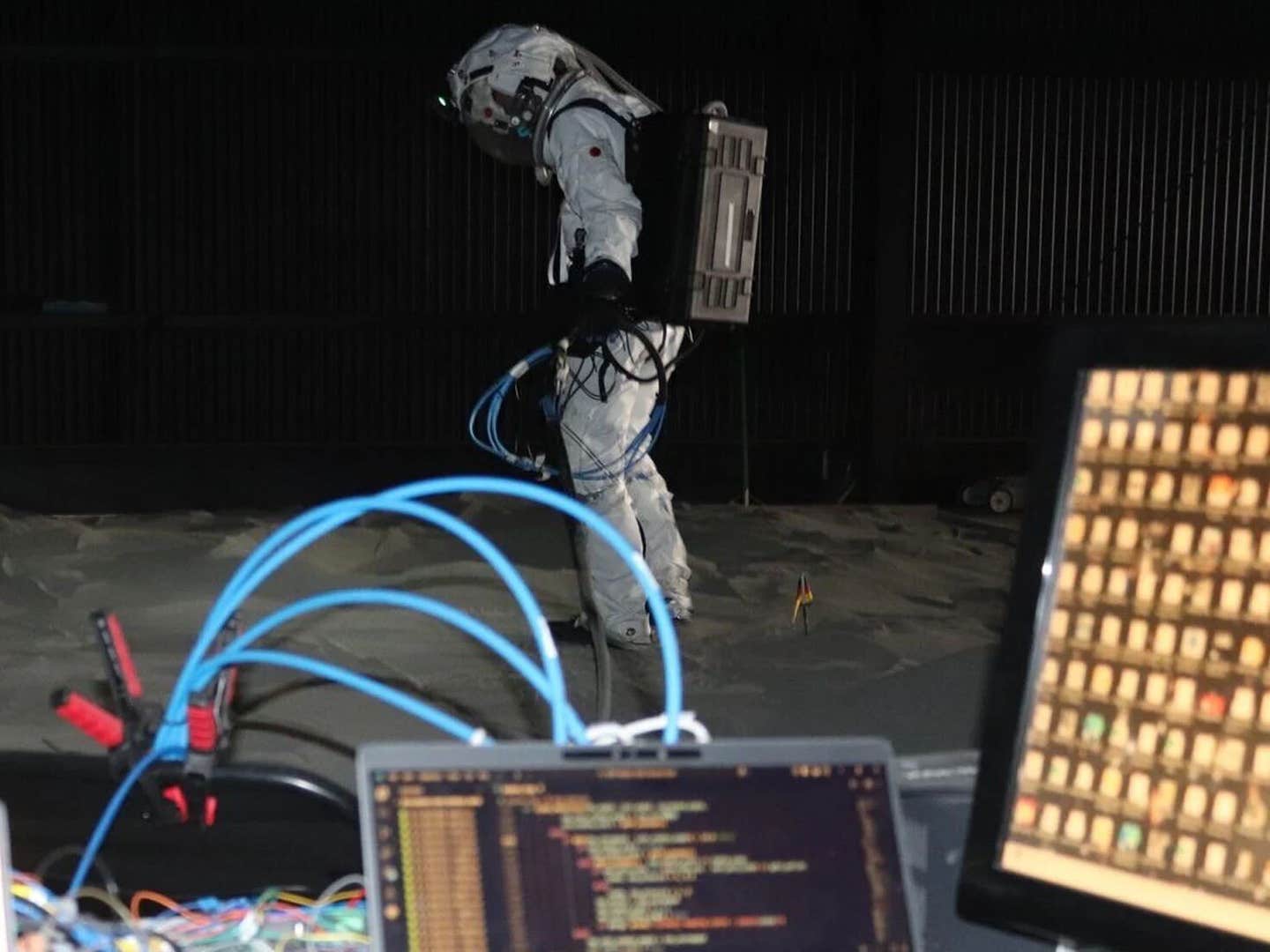Electronic skin that can feel in real time just like humans do
It is paramount for electric skin – being developed for artificial skin – to be capable of reacting to the external environment in real time

[Feb 26, 2022: Jinyoung Huh, Pohang University of Science & Technology]
It is paramount for electric skin – being developed for artificial skin or humanoid robots – to be capable of reacting to the external environment in real time. (CREDIT: Ella Maru Studio)
We can pick up objects and take steady steps thanks to the tactility in our hands and feet. As such, skin acts as a channel that connects the external world or stimuli with the human body. When these sensory functions do not work properly, it becomes difficult to grasp or use objects, or in worse cases, fail to protect ourselves from dangerous external stimuli such as heat that can cause burns. Therefore, it is paramount for electric skin – being developed for artificial skin or humanoid robots – to be capable of reacting to the external environment in real time.
A POSTECH research team led by Professor Unyong Jeong and Ph.D. candidate Taeyeong Kim (Department of Materials Science and Engineering) in collaboration with Professor Sung-Phil Kim and Ph.D. candidate Jaehun Kim (Department of Biomedical Engineering) at UNIST has developed an electronic skin that can sense tactility just as humans do.
Conventional electronic skins could only process tactile information by sequential measurement of electric signals coming from the vast number of pixels configured in the sensor. Thus, densely packed pixels took much time to measure, rendering it difficult to create an electronic skin with high spatial resolution that responds immediately to stimuli.
(a) Scheme of the artificial receptors generating the position-encoded spike spectrum, which contains the position information, based on the spike signal generation in the human somatosensory system, (b) The newly developed e-skin and wearing it on the finger, c) A robotic arm equipped with e-skin instantaneously detects and grasps a spherical metal ball. (CREDIT: POSTECH)
Related News
The skin’s sensory receptors generate a spike signal spectrum in the form of electric potential in response to an external stimulus and recognizes it by analyzing the signal pattern in the brain. The researchers took a hint from this signal generation and recognition mechanism of the skin’s sensory system to develop an artificial sensory receptor that generates spike signals on its own, and created an electronic skin that can send all signals simultaneously to be analyzed in real time.
Video showing the electronic skin registering touch to reflect the letter 'Z' applied to the skin. (CREDIT: POSTECH)
Since a biosignal lacks information on location, it is difficult to recognize a dynamic external stimulus in high spatial definition. To overcome this limitation, the researchers presented for the first time that the artificial spike signals can be characterized to contain the position information. Equipped with this functionality, the e-skin can analyze spatial information such as position and motion trace, and temporal information such as speed and dynamic contact area. Since all artificial receptors in an e-skin transmit signals with only one pair of measuring electrodes, the electrode structure has been simplified compared to the conventional e-skins.
Applying this technology to an actual robot, the researchers confirmed that the artificial skin reacts to the external stimuli as humans do.
“Our body steadily generates electric signals thanks to the flexible nature of electrolytes,” explained Professor Unyong Jeong of POSTECH who is a co-corresponding author of the study. “Understanding the biosensory mechanisms and developing methods to actualize them with electrolyte materials, we anticipate the e-skin to be applicable to recover tactility in damaged skin in patients and make robots with the ability to emotionally connect with humans.
Professor Sung-Phil Kim of UNIST, the other co-corresponding author of the study, remarked, “Converting the external stimuli into spike signals and processing them is a groundbreaking idea that mimics how the human nervous system processes information.” He added, “If a new AI model is developed using this spike information encoding method, robot tactile intelligence can be further developed and effectively applied to next-generation semiconductor technologies such as neuromorphic chips.”
Published in the international journal Science Robotics, this study was conducted with the support from the Basic Research Laboratory Program and the Brain Convergence Research Program through the National Research Foundation of Korea.
For more science and technology news stories check out our New Innovations section at The Brighter Side of News.
Note: Materials provided above by Pohang University of Science & Technology. Content may be edited for style and length.
Like these kind of feel good stories? Get the Brighter Side of News' newsletter.
Tags: #New_Innovations, #Skin, #Electronic, #Tactile, #Research, #Science, #Robotics, #Feeling, #The_Brighter_Side_of_News



